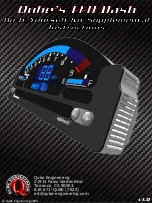
84
Check tyres for damage from time to time and remove any
foreign bodies (nails/stones, metal chips etc.) embedded
in treads.
While fitting wheels on the vehicle make sure that wheel
bolts are free from dust, scratches, dirt, dents, etc.
Do not oil wheel bolts and nuts. Wipe off any adhering
oil on bolts/nuts
Tightening torque of wheel nuts :12-15 mkg. Retighten wheel
nuts after 100 km of every wheel change.
New tyres do not give maximum grip straightway and
should therefore be run-in at moderate speed for the
first 100 km. This will help to make the tyres last long.
To avoid damage to tyres and wheels, drive slowly over
speed breakers / bumps / rough roads.
Wheel balancing
Wheels of your vehicle are balanced. The same should be
maintained when repairing a tyre or tube and replacing the
tyre or rim.
Repairing a tyre / tube
Mark suitably the tyre position (If original colour dot mark
is not visible) with respect to valve stem hole to ensure that
tyre is refitted in original location. Ensure that the balancing
VEHICLE MAINTENANCE
WHEELS & TYRES
weights are not disturbed during removal of tyres. Check
the balance weight prior to removal of tyre, if found loose,
mark its location on the rim and refit properly.
Replacing a tyre / rim.
When the tyre or rim is changed the wheel should be properly
balanced on a machine after inflating to the specified value
as per the following norms.
1. Permissible imbalance for tyre with rim = 250 gm-cm
max.
2. Permissible balance weight for tyre with rim = 140 gm
max.
3. Relocate the tyre if the weight required to balance is
more than 140 gm.
4. Balance weights are available from 10 gm to 90 gm in
steps of 10 gm and from 80 to 140 gm in steps of 20 gm.
5. Do not use more than one balance weight on side.
Summary of Contents for SUMO GOLD
Page 4: ...4 DO YOU KNOW ...
Page 39: ...39 HANDLING COMBI SWITCH COMBI SWITCH ...
















































